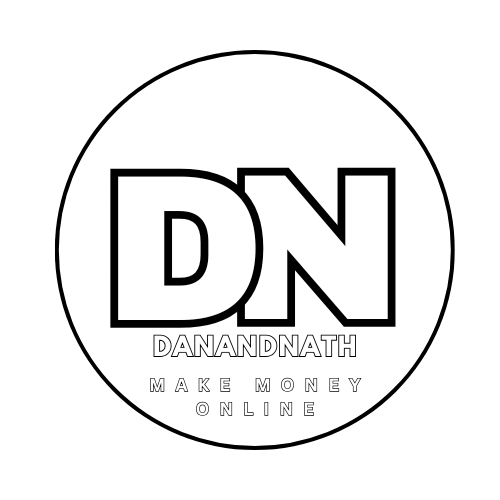You’re probably wondering, like I did, how much YouTubers actually pull in for a million views. We’ve all seen those creators living the dream, right? Fancy cars, slick studios—or maybe just that one person who casually drops that their “side hustle” makes thousands a month. And yeah, you start to do the math in your head, probably while you’re deep in a 2 a.m. doom-scroll, watching some tech reviewer in a spaceship-looking room.
Here’s the spoiler, and it’s a bit of a messy one: there’s no single answer. It’s complex, and depends on so many factors, it’ll honestly make your head spin. But hey, I’ve done some digging, and I’m just as curious as you are, so let’s unearth it.
The YouTube Money Machine: How It Actually Works
First things first, YouTube’s main revenue stream for creators comes from ads. You know the drill: those skippable ones that pop up before your video, or the ones that rudely interrupt your binge-watch mid-way through? Yep, that’s the cash flow right there. But before you see a single penny, you’ve got to jump through some hoops to join the YouTube Partner Program.
We’re talking 1,000 subscribers and 4,000 hours of watch time in the past year.
Sounds deceptively simple, but trust me, it’s not. I remember trying to hit those numbers for a small channel I started—it honestly felt like trying to climb Everest in flip-flops. You’re just constantly grinding, putting out videos, and praying people actually stick around long enough for it to count toward that watch time.
Once you’re finally in the program, you start earning a cut of that ad revenue. The big question, though, is how much? Well, it all hinges on two terms that might sound like corporate jargon but are, in fact, pretty straightforward: CPM and RPM.
- CPM (Cost Per Mille) is what advertisers pay YouTube for every 1,000 ad impressions. Think of it as the price tag for showing their ad to a thousand eyeballs.
- RPM (Revenue Per Mille) is what you, the creator, actually take home after YouTube’s cut—which, by the way, is a hefty 45%. Ouch, right?
Now, here’s where it gets a little wild. The amount you earn per 1,000 views can swing dramatically, anywhere from perhaps $1 to $30. Yeah, that’s a massive gap. On average, though, most creators are probably pulling in somewhere between $5 to $10 per 1,000 views.
So, let’s do some quick math for that magical million views. If your RPM is $5, you’re looking at $5,000 for a million views. Not too shabby, I guess? But if you’re lucky enough to be in a high-paying niche with an RPM of $20, that’s a cool $20,000 for the same million views. And some creators, especially in really super niche topics, might even hit $50 per 1,000 views—though that’s definitely rare. I mean, who’s getting that kind of money just for talking about, I don’t know, tax software? Apparently, someone is.
Why the Numbers Are All Over the Place
So, why such a huge range? It’s not just random, not at all. There are a bunch of factors at play, and honestly, it’s kind of fascinating how much this stuff truly matters. Let’s break it down.
1. Your Niche Is Everything (Well, Almost)
The type of content you create is probably the biggest driver of your earnings, full stop. Advertisers are notoriously picky—they’ll happily pay top dollar for some audiences but just pennies for others. For instance, niches like finance, real estate, or tech? Those are total gold mines. I was genuinely shocked when I learned that a video about, say, “How to Invest in Index Funds” could easily earn 10 times more per view than a gaming walkthrough. It’s because companies selling financial software or real estate services have seriously deep pockets, and they’re more than willing to pay for those specific eyeballs. Here’s a quick rundown of some high-CPM niches:
- Finance and investing (think stock market tips or crypto explainers)
- Real estate (home tours, mortgage advice)
- Technology (gadgets, software reviews)
- Health and wellness (fitness routines, mental health advice)
- Business and marketing (SEO tips, startup strategies)
On the flip side, niches like gaming, pranks, or those “Top 10 Things You Didn’t Know” lists? They generally tend to have lower CPMs. Don’t get me wrong—those videos can still rack up millions of views, but the payout per view is often, well, meh. I vividly remember watching a gaming channel with something like 10 million views a month, and the creator actually said they were barely breaking even. Brutal.
2. Where Your Viewers Are Matters
Here’s something I absolutely didn’t expect when I first started looking into this: geography plays a huge role. Advertisers, you see, pay more to reach viewers in wealthier countries like the U.S., Canada, or the UK. If most of your audience happens to be in, say, India or Brazil, your CPM is likely going to be lower. It’s not fair, I know, but it’s just how the ad market works. I once chatted with a creator who noticed their earnings spiked dramatically when they started getting more U.S. viewers, even though their total views stayed pretty much the same. Wild, right?
3. Video Length and Ad Placements
This one’s pretty straightforward, but it’s a real game-changer. Longer videos generally make more money because, naturally, you can cram in more ads. If your video is over 8 minutes, you can sprinkle in mid-roll ads—those are the ones that pop up in the middle of a video. More ads, more money. But here’s the catch, and it’s an important one: don’t just pad your videos with fluff just to hit that 8-minute mark. Viewers aren’t dumb—they’ll click away faster than you can say “monetization” if you’re just wasting their time. I made that mistake once with a video I stretched out with a completely pointless intro. Big flop. Lesson learned: always add value, never just filler.
4. Engagement Isn’t Just a Buzzword
You’d think more views equals more money, right? But it’s really not that simple. Engagement is huge. If people are consistently skipping your ads or, perhaps, not interacting with them, your RPM will absolutely take a hit. Comments, likes, and shares also significantly boost your video’s visibility, which, in turn, can indirectly increase your earnings. I’ve actually seen videos with fewer total views outperform others because the audience was super engaged, leaving tons of comments and sharing it everywhere. It’s almost like YouTube’s algorithm rewards you for creating a thriving community. Makes sense, I guess.
How Much Do YouTubers with 100K Subscribers Make?
This is one of those questions people always ask (and yes, I’ve Googled it too). There’s no fixed number, obviously, but a channel with 100,000 subscribers might realistically pull in anywhere from $2,000 to $5,000 a month, assuming they’re getting decent views and, importantly, good engagement. It really does depend heavily on their niche and how consistent they are with their uploads. A tech channel with 100K subs could easily outearn a gaming channel with the exact same subscriber count because of those higher CPMs. It’s not an exact science, but that’s roughly the ballpark.
Beyond Ads: The Real Money-Makers
Here’s the thing—ads are, frankly, just the tip of the iceberg. A lot of YouTubers are making serious bank from other sources, and honestly, this is where the really big money’s at. Let’s talk about a few:
- Sponsorships: Brands will literally pay you to promote their products. Rates vary wildly, but I’ve heard of creators with a million subscribers charging $10,000 or even more per sponsored video. Even smaller channels, perhaps like yours or mine might be, can snag deals for a few hundred bucks. I once got offered $200 to promote a fitness app on my tiny channel. I didn’t take it (it felt a bit too salesy for me at the time), but it definitely showed me just how accessible this can be.
- Affiliate Marketing: This is when you share links to products and earn a commission if someone buys something through your unique link. It’s relatively low-effort and can really add up over time. For example, tech reviewers often link directly to Amazon products and make a small cut on every single sale.
- Digital Products: Courses, ebooks, templates—you name it. Some creators are legitimately pulling in six figures a month just by selling online courses. I actually bought one once (a video editing course), and it was honestly worth every single penny.
- Merchandise: Selling branded hoodies, mugs, or stickers is another solid way to cash in. It’s not always a huge moneymaker on its own, but it certainly adds up, especially if your audience genuinely loves your vibe and wants to support you.
If you want to learn how to maximize your YouTube earnings with strategies like sponsorships, digital products, and affiliate marketing, YouTube Secrets by Sean Cannell is your guide. This book has been a game-changer for me, helping me unlock new ways to monetize my channel and grow my audience. If you want it to help you like it’s helped me and thousands of other creators, grab YouTube Secrets by Sean Cannell here!
Real-World Numbers to Take In
Let’s put this into perspective with some hypothetical examples (because who doesn’t love some practical math?).
- Gaming Channel: Say you’ve got a gaming channel pulling in 6.5 million views a month with an RPM of just $3. That’s $19,500 a month. Decent, but maybe not exactly life-changing when you truly consider the countless hours spent editing those videos. Trust me, I’ve edited gameplay footage—it’s a definite slog.
- Finance Channel: Now, imagine a finance channel with 1.9 million views a month and a much higher RPM of $20. That’s a whopping $38,000 a month. Now we’re really talking! You’re probably not working a 9-to-5 anymore at that point, I’d wager.
- Tech Channel: And for a tech channel with a wild 46 million views a month and an RPM of $10? That’s an astonishing $460,000 a month. Okay, now you’re definitely buying that spaceship-looking studio.
Tiktok?
Oh, and since people often ask—how much does TikTok pay per view? It’s way, way less than YouTube. TikTok’s Creator Fund typically pays about $0.02 to $0.04 per 1,000 views. So, a million views might only get you $20 to $40. Yikes. That’s precisely why TikTok creators lean so heavily into brand deals and sponsorships to make real money.
Just My Thoughts (and a Little Extra)
Here’s the real deal: YouTube is absolutely not a get-rich-quick scheme. I genuinely used to think it was—upload a few videos, go viral, buy a yacht. Nope, not at all. It’s a proper grind, a relentless effort. But, it’s also kind of magical, isn’t it? There’s just something incredibly satisfying about creating content, connecting with an audience, and watching those numbers slowly tick up. I had this one video—a random rant about why I hate overpriced coffee, of all things—that somehow managed to get 10,000 views. It made like $20, but I was utterly thrilled. It truly felt like a win.
The thing is, no two creators really have the same journey. One might strike gold with a viral video in a high-CPM niche, while another’s grinding for years and years just to make a steady, comfortable income. And don’t even get me started on the algorithm—it’s like trying to predict the weather, honestly. I’ve had videos that I thought were absolute masterpieces flop spectacularly, and then some completely throwaway clip I filmed on my phone goes off. Go figure.
If you’re truly serious about making money on YouTube, diversify. Ads are great, sure, but sponsorships, affiliate links, and digital products are truly where the real, long-term potential lies. Oh, and above all, focus on your audience. Make content that truly resonates, that makes people feel something. Because at the end of the day, it’s not just about the money—it’s about building something that’s uniquely yours.
So, yeah, a million views could mean $1,000 or $20,000—or, indeed, much more, if you’re really lucky and play your cards right. It’s part art, part science, and a whole lot of sheer perseverance. My advice? Start experimenting, crunch your own numbers, and just see where it takes you. Perhaps you’ll be the next one buying that fancy studio. Or at the very least, you know, comfortably paying your rent.






